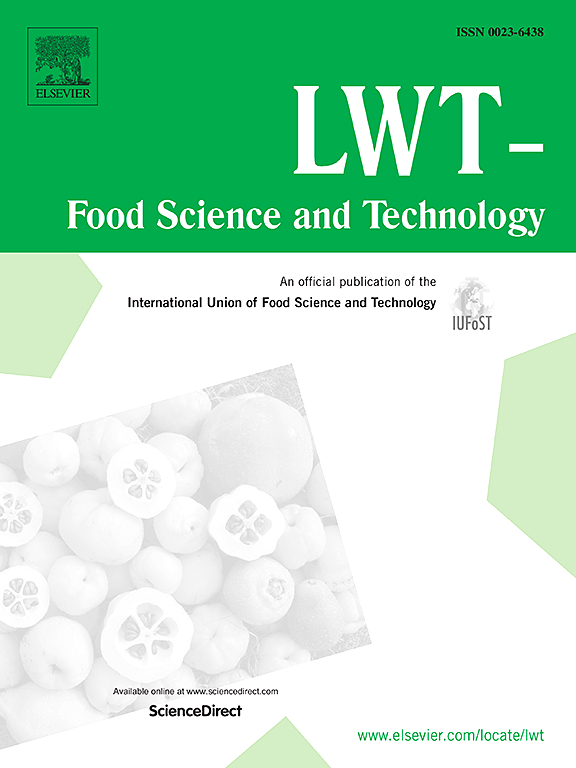Volatile organic compound dynamics in Ugni Blanc and Vidal wines during fermentation in the Hexi Corridor (China): Insights from E-nose, GC-MS, GC-IMS, and multivariate statistical models
IF 6
1区 农林科学
Q1 FOOD SCIENCE & TECHNOLOGY
引用次数: 0
Abstract
In this study, the dynamic changes of volatile organic compounds (VOCs) in Ugni Blanc and Vidal wines during different fermentation stages in the Hexi Corridor region (China) were comprehensively investigated using a combination of GC-MS, GC-IMS, and E-nose techniques. 71 and 63 VOCs were identified through GC-MS and GC-IMS, respectively, with esters, alcohols, aldehydes, and ketones comprising the predominant compounds. The fermentation process induced significant changes in the composition and concentration of VOCs. Furthermore, E-nose analysis demonstrated effective discrimination between Ugni Blanc and Vidal wines. The orthogonal partial least squares discriminant analysis and Random Forest models were employed to analyze GC-MS and GC-IMS data, facilitating the identification of VOCs that significantly influence these wines at various fermentation stages. By combining the calculation of OAV and ROAV, 9 potential key aroma compounds were identified, including (Z)-3-hexenyl acetate, isoamyl acetate, ethyl octanoate, ethyl laurate, 1-octanal, 1-pentanal, isobutyraldehyde, 1-octen-3-ol, and β-damascenone. This study provides valuable insights into the dynamic changes of VOCs during the fermentation of Ugni Blanc and Vidal wines, offering a foundation for improved fermentation control and enhanced wine quality.
求助全文
约1分钟内获得全文
求助全文
来源期刊

LWT - Food Science and Technology
工程技术-食品科技
CiteScore
11.80
自引率
6.70%
发文量
1724
审稿时长
65 days
期刊介绍:
LWT - Food Science and Technology is an international journal that publishes innovative papers in the fields of food chemistry, biochemistry, microbiology, technology and nutrition. The work described should be innovative either in the approach or in the methods used. The significance of the results either for the science community or for the food industry must also be specified. Contributions written in English are welcomed in the form of review articles, short reviews, research papers, and research notes. Papers featuring animal trials and cell cultures are outside the scope of the journal and will not be considered for publication.
 求助内容:
求助内容: 应助结果提醒方式:
应助结果提醒方式:


